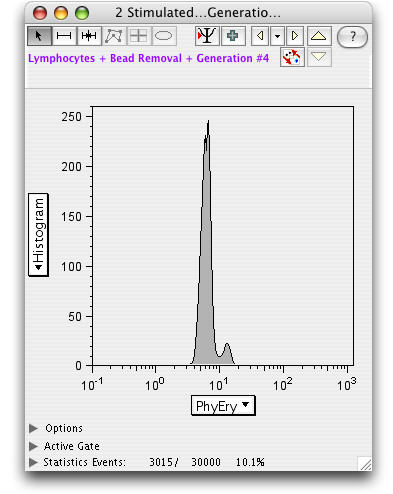
This is so they can identify and repair issues before they impact the end-user. The individuals who manage the instruments (core directors, shared-resource facility managers) tend to establish and run quality control on the instruments.

The operation and characterization of the instrument is essential for good reproducible data. As this little vignette shows, it is more than just “always using 3 patients.” As the power of an experiment increases, the chance of a Type II (false negative) error decreases. Determine the appropriate sample size-The number of replicates, number of samples is critical to determine before performing the experiments. Gaussian distribution or not), the appropriate test should be identified before starting.Ĭ. Define your statistical test-Depending on what is being compared and what assumptions are being made about the data (e.g. However, this is only a guideline and should be evaluated for each experiment.ī. Define your threshold- The alpha value is typically set to 0.05 based on work by RA Fisher. It is a best practice to decide on which of the statistical tests you will be performing BEFORE you start your experiments. The experiments must be designed to withstand the statistical tests that you will be using. Proving the hypothesis will require statistical analysis of the data. Error 2: Know which statistical tests are appropriate for your data. For instance, flow cytometry brings statistical power to examining cell populations from other experiments. Is there another technology that will confirm the findings?-It is always useful to have data from two different technologies that can confirm each other. Is flow cytometry a path to another technique?-For example, will sorted cells be used to perform experiments such as RNAseq, Proteomic analysis, cell culture etc? If so, what controls will you need to build into the experiment to help evaluate the handoff between technologies?Ĭ. Is flow cytometry the right tool to answer the question?-Sometimes flow isn’t the best way to answer the question so it’s better to make the decision before starting experiments.ī. In examining the hypothesis, there are several questions that should be on your mind…Ī.

It may seem obvious, but the goal of the experiments is to prove some hypothesis that you are testing. In particular, you must follow these 5 experimental tips before embarking into the peer review process… Error 1: Know what your hypothesis is and design the experiments to test your hypothesis. To avoid publishing errors that reviews despise, it’s important to follow and promote the best practices in the field, thus ensuring that your data is reproducible to investigators attempting to validate your research. What does that mean to you, the flow cytometry researcher? Unfortunately, as Begley and Ellis pointed out in a commentary in Nature that when Amgen attempted to reproduce 53 “landmark” papers in the area of cancer research, only 6 papers were “confirmed.”

#FLOWJO 10 BACKGATE FULL#
One cannot publish data if the experiments cannot be replicated are are full of errors. Reproducibility is a critical component of the scientific process.


 0 kommentar(er)
0 kommentar(er)
